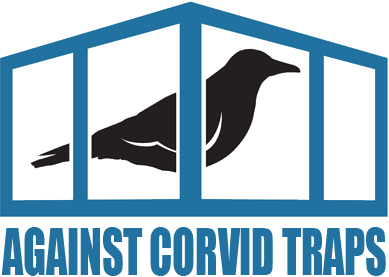A Brief Guide to Larsen Trap Legislation
In 1996 following concerns that Larsen traps where being used to catch protected birds the General Licence for Larsen traps was tightened. As a result the license allows the trap to be used for the control of: Crows, Magpies, Rooks, Jackdaws and Jays. Wood pigeons and Sparrows were removed from the legal decoy list. Further amendments were added on the 1st January 2000. There follows a general outline of the main points affecting operation in the field of corvid control.
All Larsen trapping operations must be carried out for a purpose. Simply hating Crows for example is not a valid reason.
The welfare requirements of the decoy must be taken into account (see report: BASC member guilty). Decoy birds must be provided with food, water, shelter and a perch. As with all traps the Larsen must be checked at least once a day. The check time is generally carried out between the hours of one hour before sunrise and one hour after sunset.
The Larsen trap is governed by a general licence under the Wildlife and Countryside Act 1981.
Captured birds provided they fall within the legal quarry list may be dispatched by an approved method.
Unbelievably there is no set size to decoy cages. Some manufacturers, in an effort to increase profit by saving on materials, are supplying Larsen traps with decoy compartments less than 18 inches cubed! Please keep an look out for any this small and notify us of their exact location.
When not in use Larsen traps MUST be rendered incapable of catching, i.e. no bird can push the trap door open and become caught as a result. Top opening traps can be turned upside down or have the door springs unhooked.
From the 1st January 2008 Natural England general licences replaced those previously issued by Defra.
WML-GL04: Licence to kill or take certain birds to prevent serious damage or disease
WML-GL05: Licence to kill or take certain birds to preserve public health or public safety
WML-GL06: To kill or take certain birds to conserve flora and fauna (including wild birds)
Related
Possession, sale and competitive showing of birds – A summary of the law
For a complete list of General Licences: Natural England – General Licences
It’s important to understand that the General Licence was introduced not to protect the welfare of trapped birds but to ensure that gamekeeper could not be prosecuted for killing magpies and crows. A clear example of this can be seen with the Hoghton Tower case, in this case the Lancashire Police Wildlife Liaison Officer also happened have taken part in shoots on the estate. Later he gained employment with BASC.
